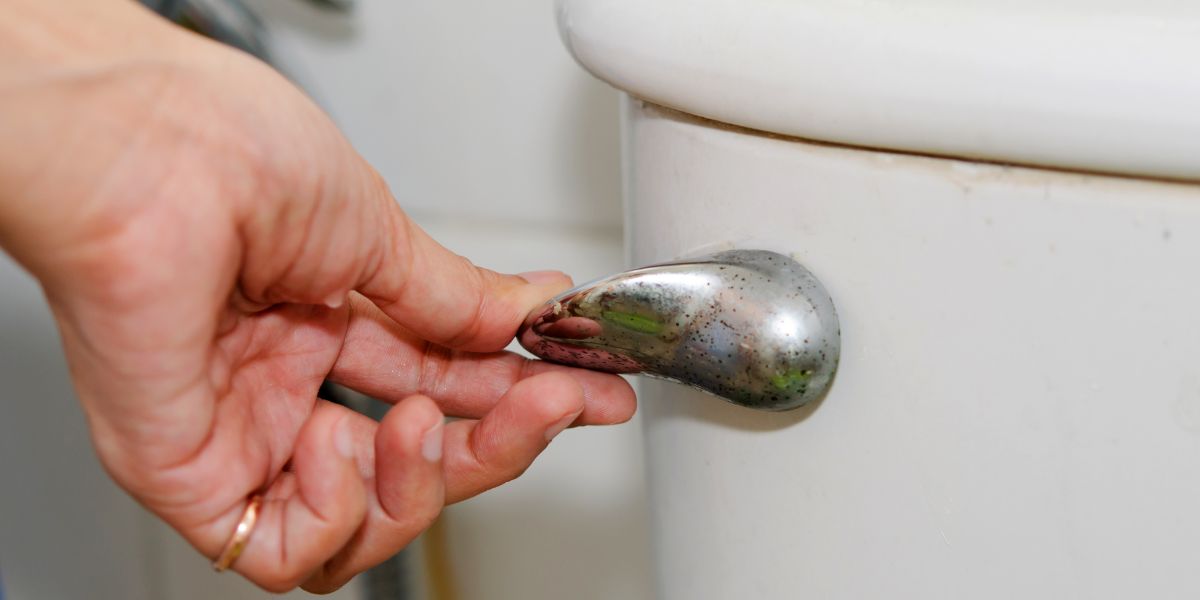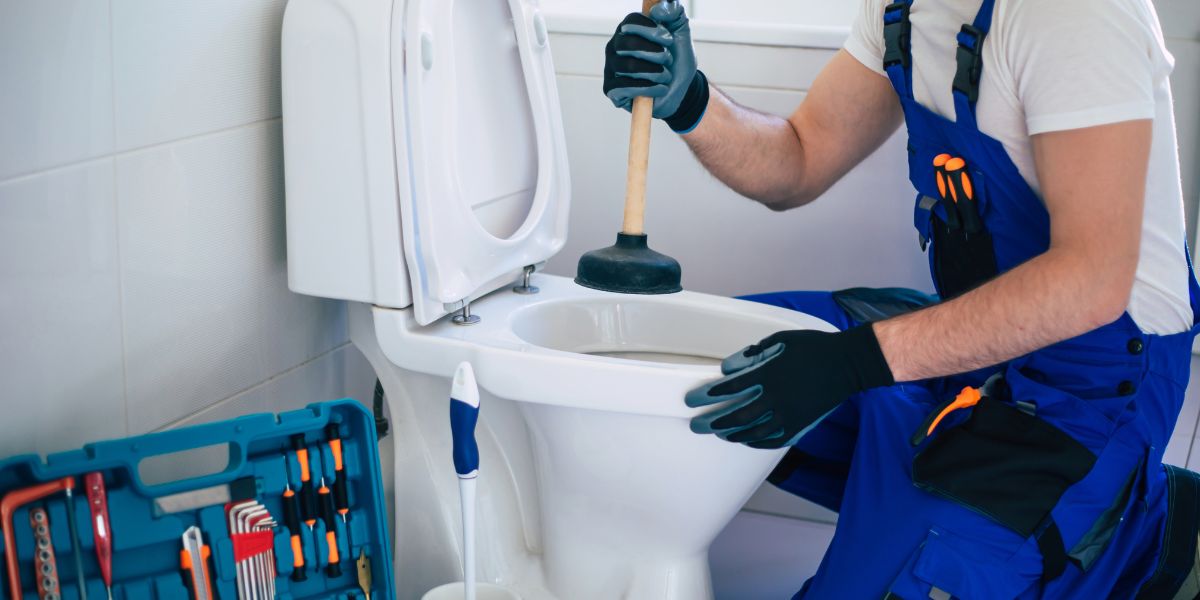Have you ever wondered why your toilet flushes slowly? It’s a common issue that many homeowners face, and it can be both frustrating and concerning. In this article, I’ll show you the reasons behind a slow-flushing toilet and provide actionable solutions to get your toilet back in top shape. From clogs to low water levels, I’ve got you covered.
Read on to understand the intricacies of your toilet’s flushing mechanism and how to optimize its performance.
Article Outline:
- What Causes a Slow Flushing Toilet?
- How to Fix a Slow-Draining Toilet?
- Toilet Repair: When to Call a Plumber
- Preventing Future Toilet Issues
What Causes a Slow Flushing Toilet?

One of the most inconvenient and frustrating situations any homeowner can face is a slow-flushing toilet. Picture this: you’ve just finished your business, expecting a swift flush to whisk everything away, but instead, you find yourself waiting endlessly.
There are several potential causes of a slow-flushing toilet. Here are the key culprits:
- Clogged Waste Lines: Blockages in the drain pipes can impede the efficient flow of water, leading to slow flushing.
- Low Water Levels in the Tank: If the toilet tank doesn’t fill up properly with the right amount of water, it won’t have enough force to flush the toilet effectively.
- Faulty Flushing Mechanisms: Problems with the flushing mechanism, such as a malfunctioning flapper or flush valve, can hinder the flushing process.
- Blocked Jet Holes: Mineral deposits and debris accumulating in the rim and jet holes of the toilet bowl can restrict water flow, resulting in a weak flush.
1. Toilet Drain Clogged
One of the most common causes of a slow-flushing toilet is a clogged drain. Over time, toilet tissue, waste, and other debris can accumulate in the pipes, leading to partial or complete blockages. If you notice water draining slowly after you flush, it’s a clear sign of a clog. Using a plunger or a toilet brush can help dislodge minor blockages and help flush your toilet with ease, but for severe clogs, you might need the expertise of a plumber.
2. Water Level Concerns: Not Enough Water in the Tank
Another common reason for slow toilet flushes is an insufficient water level in the tank. The water from the tank provides the force needed for a powerful flush. If there’s not enough water, the flush will be weak, leading to incomplete waste removal. Ensure the water level in your toilet tank is set correctly, and if required, adjust the float mechanism. A clogged toilet can often be traced back to such seemingly minor but critical details.
3. Faulty Flushing Mechanisms
Problems with the flushing mechanism can significantly disrupt the efficient functioning of your toilet. A malfunctioning flapper, for instance, can lead to inadequate sealing and cause water leakage between flushes, diminishing flushing force. Similarly, issues with the flush valve, responsible for the controlled release of water, can result in partial or obstructed water flow during flushing. These disruptions not only lead to a weak flush, but can also contribute to water wastage. Addressing these concerns promptly is essential to restore the flushing mechanism’s effectiveness, ensuring a reliable and powerful flush that properly evacuates waste with every use.
4. Blocked Jet Holes
Within your toilet bowl, there are small, often unnoticed openings around the rim known as jet holes. These tiny openings play a crucial role in creating the swirling action needed for an effective flush. Over time, mineral deposits from hard water and debris can accumulate in these jet holes, impeding the flow of water during a flush. As a consequence, the flush becomes weaker, and waste removal less efficient. Regularly clearing these jet holes with a specialized toilet bowl cleaner helps maintain optimal water flow, ensuring your toilet consistently delivers a robust flush, keeping your bathroom experience trouble-free.
How to Diagnose and Fix a Slow-Draining Toilet?
Begin by examining the water level within the tank – if it’s lower than it should be, adjusting the float can remedy this. Then, investigate the often-overlooked jet holes encircling the toilet’s rim; mineral deposits and debris can accumulate here, hindering proper flushing. To tackle this, use a dedicated toilet cleaner or a toilet brush with an under-rim scrubber. However, if despite your efforts, the problem persists, it may be prudent to enlist the services of a professional plumber for a more thorough evaluation and solution.
Toilet Flushes Slowly: When to Call a Plumber

When dealing with toilet issues, it’s common to assume we can fix this problem, However, while many toilet issues can be fixed with DIY solutions, some problems require professional intervention. Indeed, toilet clogs may not seem like a big concern and perhaps calling a plumber to fix your toilet appears unnecessary.
But, if you’ve tried multiple solutions and your toilet still flushes slowly, it might be time to call a plumber. They can help find the culprit and fix complex plumbing problems, ensuring your toilet works efficiently. You no longer have to spend countless hours just to learn how to fix a toilet that flushes slowly and incompletely, thanks to professional help.
Preventing Future Toilet Issues: A Proactive Approach to Plumbing Health
Taking proactive measures to prevent toilet issues is not only cost-effective but also spares you the inconvenience of dealing with plumbing emergencies. Here are some essential steps you can take to ensure your toilet remains trouble-free:
1. Regular Maintenance
Just as you would service your car to keep it running smoothly, regular maintenance of your toilet is crucial. Inspect the flushing mechanism, including the flapper and flush valve, for signs of wear or damage. Ensure the handle is secure, and there are no leaks around the base of the toilet. Address any minor issues promptly before they escalate into major problems.
2. Mindful Flushing
One of the primary culprits behind toilet clogs is the flushing of non-biodegradable items. Avoid flushing items such as sanitary products, wet wipes, paper towels, cotton balls, and dental floss down the toilet. These can accumulate in the pipes, leading to blockages. Keep a waste bin in the bathroom for disposing of such items.
3. Proper Use of Toilet Tissue
While toilet tissue is designed to break down in water, using excessive amounts can still lead to clogs. Be mindful of the amount of toilet tissue you use, and encourage family members or housemates to do the same. Using a reasonable and conservative amount can help prevent unnecessary blockages. In addition, don’t throw sanitary products into the toilet, such as napkins or wet tissue. You might think that these products dissolves in toilet water, but they don’t.
4. Water Softener Usage
If you live in an area with hard water, consider installing a water softener for your plumbing system. Hard water contains high levels of minerals like calcium and magnesium, which can lead to mineral deposits in your toilet’s pipes and jet holes. Over time, these deposits can restrict water flow and reduce flushing efficiency. A water softener can mitigate this issue by reducing mineral content in the water, helping maintain an unobstructed flush.
5. Annual Plumbing Inspection
Engage a professional plumber for an annual plumbing inspection. They can assess the overall health of your plumbing system, including your toilet, and identify any potential issues before they become major problems. This proactive approach can save you money on costly repairs down the road.
In Conclusion:
In the quest for a smoothly functioning toilet and a hassle-free bathroom experience, here’s a recap of the essential takeaways:
- Always monitor the water level in your toilet tank.
Regularly clean the jet holes and rim to prevent mineral buildup.
Avoid flushing non-biodegradable items down the toilet.
Seek professional help if DIY solutions don’t work.
Consider replacing old toilets with modern, efficient models.
With the right knowledge and timely action, you can fix this issue with ease , ensuring that your toilet consistently flushes powerfully and efficiently. This, in turn, will contribute to the overall well-being and optimal condition of your bathroom, enhancing your daily comfort and peace of mind.
Frequently Asked Questions
Q: Why is my toilet flushing slowly?
A: There can be several reasons why you’re experiencing this problem. Some common causes include a clog in the drain, low water level in the tank, a faulty valve, or buildup in the jet holes.
Q: How can I fix a slow flushing toilet?
A: To fix a slow flushing toilet, you can try flushing it multiple times to see if it improves. If that doesn’t work, you can check the water level in the tank and make sure it is sufficient. You can also inspect the valve and clean out any buildup in the jet holes.
Q: What are some common causes of a slow flushing toilet?
A: Some common causes of a slow flushing toilet include a clog in the drain, low water level in the tank, a faulty valve, or buildup in the jet holes.
Q: How can I fix a slow-draining toilet?
A: To fix a slow-draining toilet, you can start by checking for a clog in the drain. If there is a clog, you can use a plunger or a drain snake to clear it. You can also check the water level in the tank and make sure it is sufficient.
Q: What should I do if my toilet is not flushing?
A: If your toilet is not flushing, start by checking if the handle and lift chain are connected and working properly. Ensure there’s enough water in the tank for a proper flush. If everything seems fine and it still won’t flush, it might be a clog; try using a plunger to clear it.
